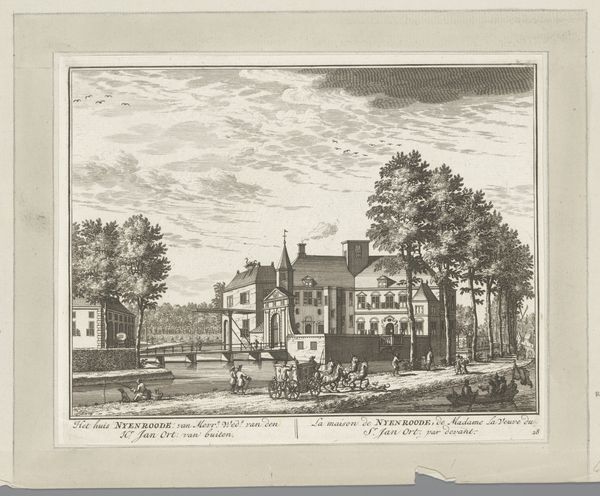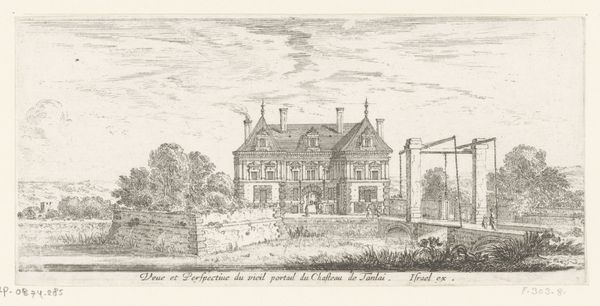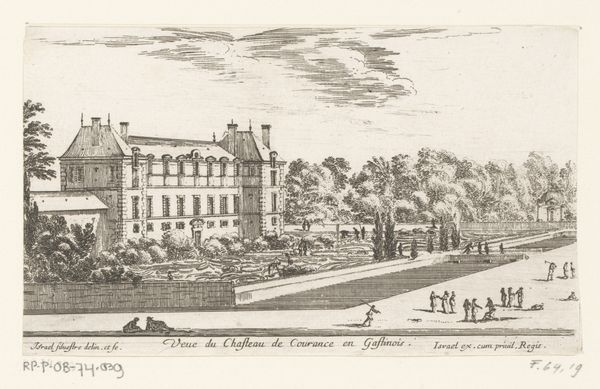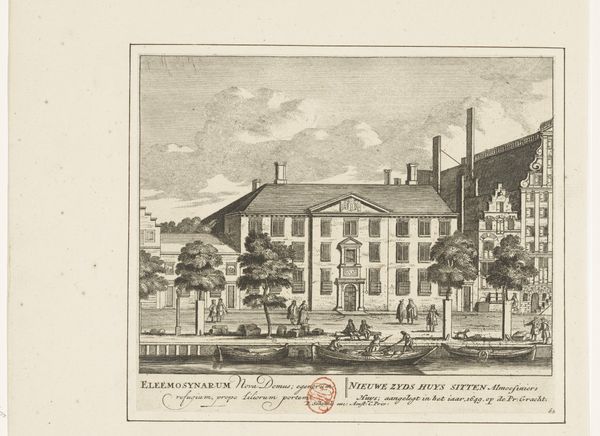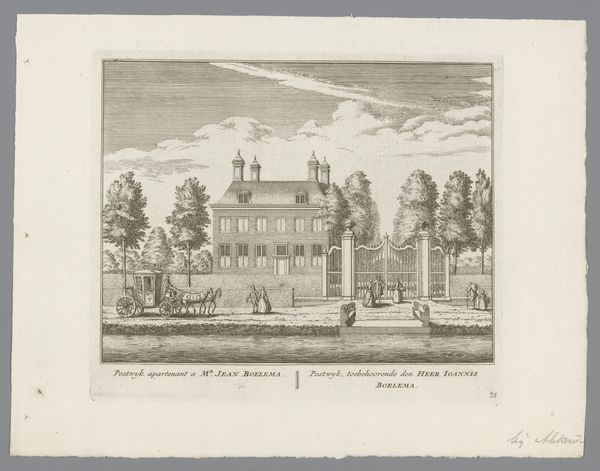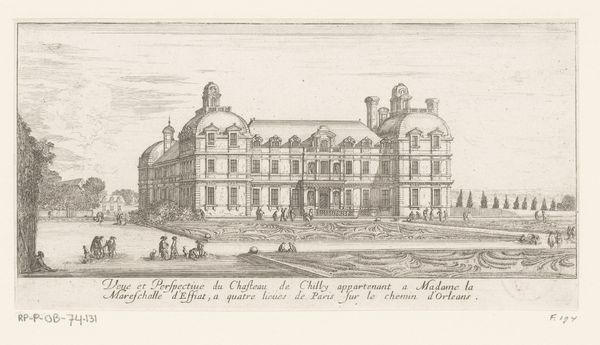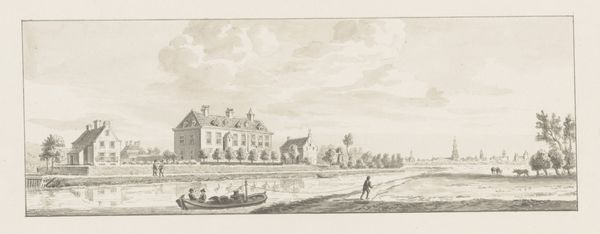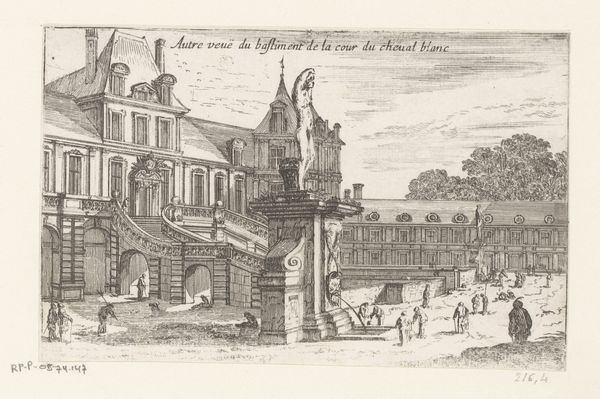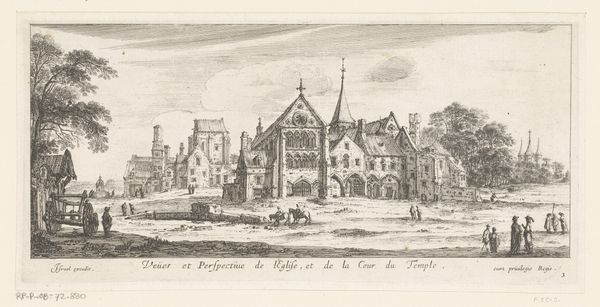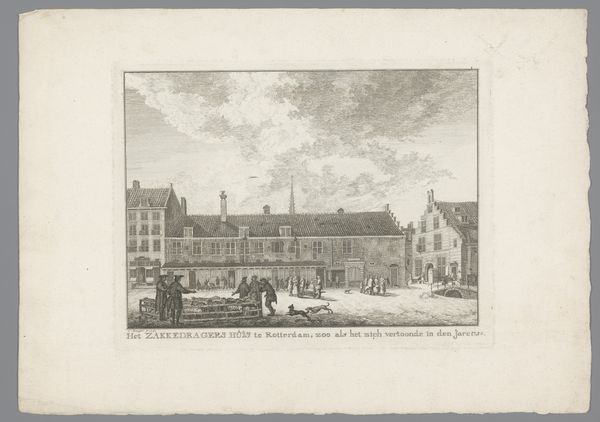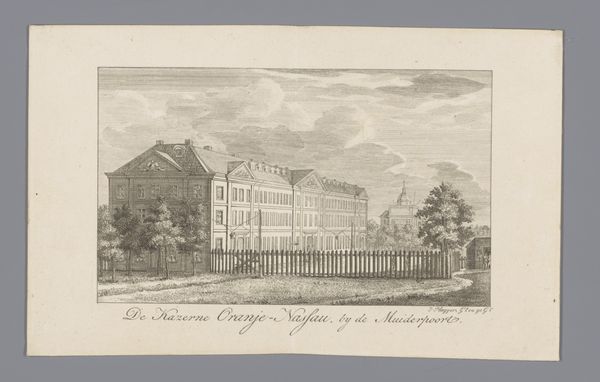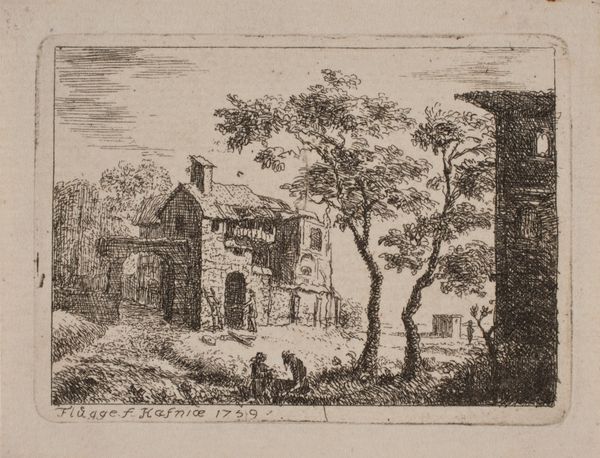
print, engraving
#
baroque
#
ink painting
# print
#
landscape
#
etching
#
engraving
Dimensions: 84 mm (height) x 130 mm (width) (plademaal)
H.G. de Lillienskjold created this etching, "Et herresæde," which translates to "A Manor," sometime in the 17th century. During this era, European society was deeply stratified, and depictions of grand estates served as potent symbols of wealth, power, and hereditary privilege. Here, Lillienskjold renders the manor with meticulous detail, emphasizing its architectural grandeur and idyllic setting. Yet, we must ask, what narratives are left out of this picture? The lives of the countless laborers and servants who maintained such estates were conspicuously absent, their stories erased in favor of an idealized vision of aristocratic life. Such images played a crucial role in reinforcing the social hierarchy of the time, perpetuating a sense of entitlement among the ruling class while silencing the voices of those who were marginalized and exploited. By critically examining these historical representations, we can gain a deeper understanding of the complex power dynamics that shaped our world.
Comments
No comments
Be the first to comment and join the conversation on the ultimate creative platform.

